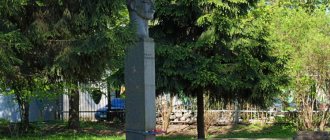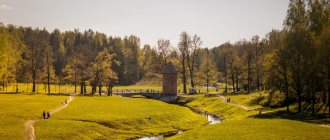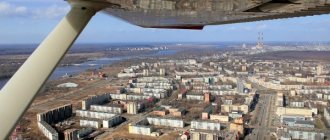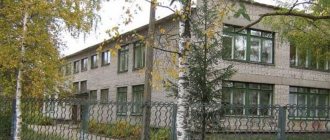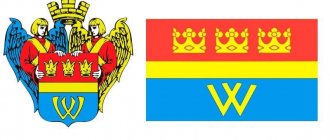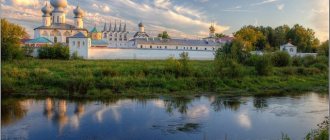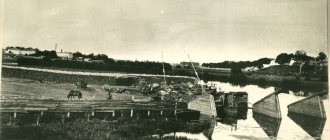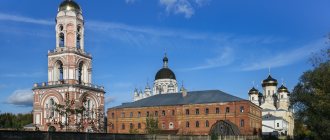The city of Yamburg received a new name in honor of Victor Kingisepp, a professional revolutionary who lived a double life, violated the laws of Estonia and undermined the foundations of society, and when arrested, attacked a policeman. After the end of the trial, reading of the verdict and execution, the Estonian authorities sank Victor’s corpse in the Baltic Sea. Local historians and local historians have long been advocating for the return of the city’s historical name, but their opinion has not yet been listened to. Yamburg is a small town 120 km from St. Petersburg, whose residents work in the port of Ust-Luga and go shopping to Estonia, the border with which is only 25 km away. You can easily get around Yamburg on foot, walking through numerous squares, parks, alleys, where, due to the abundance of plantings, the air contains a considerable amount of phytoncides. The absence of large industry has a positive effect on the environmental situation in the area. There are many moose, wild boars, foxes and hares in the forests. Unfortunately, the ancient buildings of the pre-revolutionary period have hardly been preserved due to the devastating war, but some attractions remain that are worth visiting.
Museum Kingisepp
Exhibits located in the city’s museums will tell visitors about the history of the peoples living here, important events, and introduce them to the multinational life of the population during different periods of Kingisepp’s existence. Those who come can get acquainted with the results of research activities carried out by historians and archaeologists.
Museum of History and Local Lore
- Address: Karl Marx, 1.
Visitors to this museum can get acquainted with exhibits found by archaeologists at the ruins of the Yam fortress and household items of local peoples. Most of the exhibitions are related to the medieval life of Kingisepp. The first local collections were created by local historians and historians about 45 years ago.
Of particular interest are the halls in which the life of the peoples of Kingisepp is clearly depicted using objects from different eras that have survived to this day. The most ancient exhibits have reached modern times from the time of mammoths.
The building of the museum complex was built at the beginning of the last century as a commercial school. Later there was a secondary school here. Today, the Art Nouveau building houses halls in which you can study the entire history of Kingisepp.
Izhora Folk Museum
- Address: Central, 80, Vistino.
In 1993, in the building of the former village school of Vistino (a settlement located an hour’s drive from Kingisepp), an ethnographic museum was opened, dedicated to the life and culture of the Izhoras, a small people who have lived for a long time in the north-west of Russia. At the moment, its numbers have been rapidly declining over the years. Data for 2002 indicate that 327 Izhors lived in Russia. By 2010, there were already 266 people left.
Museum of Vodka Culture in the village of Lusatia
- Address: Luzhitsy village.
Many tourists can drive past an inconspicuous Russian village 50 km from Kingisepp. In fact, the history of the residents of the village of Luzhitsa is a whole layer of events. Only here, in the Museum of Vodskaya Culture, exhibits are presented that highlight the life of the most ancient people who inhabited the Leningrad region - the Vozhans.
The building is a three-part hut with a summer and winter hut, connected by a long corridor. This housing structure is traditional for the leaders. The interior decoration is more reminiscent of a residential hut than a museum. However, around the guests there are many unusual objects that testify to the life and culture of the ancient people - from dishes to musical instruments.
Monument to soldiers "Cranes"
The monument is simple, laconic and this is its “zest”. Installed in memory of fallen soldiers, particularly in Afghanistan. The idea of creation appeared quite a long time ago, but came to life only in the early 2000s.
The funds were allocated by the city administration and residents of Kingisepp. On solemn, memorable days, an eternal flame is lit nearby. Anyone can come, just stand for a few minutes, pay respects and honor the memory of the victims.
Location: Oktyabrsky Boulevard.
Climate
The city is located in the southwestern part of the Leningrad region, directly on the Luga River. It is relatively close to St. Petersburg - about 130 kilometers. Therefore, a considerable part of the residents of Kingisepp manage to find work in the Northern capital and cover this two-way distance every day.
The climate is quite moderate, the average annual temperature is about 5.5 degrees. The wind speed is low - on average about 2-2.5 meters per second. The absolute maximum is observed in August, when the air warms up to plus 35 degrees, and the absolute minimum temperature is recorded in January and December, when it reaches minus 40. At the same time, the average temperature in summer is 16-18 degrees, and in winter - minus 5-6.
Unemployment rate
At the moment, the unemployment rate in Kingisepp remains one of the lowest in the Leningrad region. It is only 0.4%. As officials note, some credit for this goes to the Kingisepp employment center. Anyone can find a job here. The center itself is located at 6B Vostochnaya Street.
There are a large number of programs in the field of social protection of the population. Kingisepp has a very high average salary. In addition, over the past year it has grown by more than 14 percent and now equals 52,244 rubles.
Kingisepp Town Hall
A beautiful building in the city of Kingisepp, Leningrad region, with 3 floors, made of red brick. It has Romanesque outlines and modest external decoration. The town hall was completely completed in 1935. At the end of the thirties, the brass band of the rifle regiment held rehearsals in the town hall. During the Great Patriotic War, the clerical department of the Nazi concentration camp was located here. From here people were sent to forced labor, a reminder of which is the memorial plaque on the façade of the Kingisepp Town Hall.
Bronze lion
A bronze lion, a symbol of brave and noble character, was created in honor of the hero of the Battle of Borodino - Karl Bistrom. The landmark of Kingisepp, established by Klodt, is located in Romanovka, Bistrom’s family estate. The lion was erected with the money of employees of the guards corps, headed by Bistrom. A building for disabled soldiers was built near the lion. There is a park on the estate and cultural events are organized. There is also an equestrian club, and in the winter season a ski center opens. 2 times they wanted to send the lion to be melted down. Today the sculpture is a symbol of the city.
A little history
The fortress city of Yam, present-day Kingisepp, was founded in 1384 and, together with Ivangorod, Koporye and Korela, formed four long-suffering cities that, over the long centuries of history, constantly changed hands (including from Swedish to Russian). Over time, the defensive importance of Kingisepp faded away, and in the second half of the 18th century. the fortress was dismantled.
The name "Kingisepp", which today seems like a completely natural toponym, is actually the surname of an Estonian revolutionary figure. And until 1922 the city was called Yamburg.
Catherine's Cathedral
A landmark of the city of Kingisepp is the famous Orthodox Church, which has a solemn appearance. It has light walls and blue domes. The temple was built in the 17th century in honor of Catherine of Alexandria. The structure has a cross shape and has 4 rounded towers located diagonally. The bell tower with the main entrance completes the appearance of the temple. In the courtyard of the cathedral there are old crosses from an abandoned cemetery. There is also part of the tombstone of the daughter of a merchant from Kingisepp.
Ecology
60% of the Kingisepp district is occupied by forests, 12% by swamps. The ecological situation in this area is favorable. The content of harmful substances in the soil and air does not exceed the norm.
The EuroChem enterprise, which produces agricultural fertilizers, is located in the Kingisepp district. When taking water samples in the immediate vicinity of the plant, elevated levels of phosphorus and copper were detected.
How to get there
Transport links with neighboring cities are quite developed. The Moscow-St. Petersburg-Estonia railway and the St. Petersburg-Tallinn highway pass through Kingisepp.
By plane
The nearest city where the airport is located is St. Petersburg (130 km from Kingisepp). The cost of a plane ticket Moscow-St. Petersburg-Moscow is from 4,400 rubles/1 adult economy.
From Bus Station No. 2 of St. Petersburg to Kingisepp there are buses 841 (the final one is the old Kingisepp station) and 851 (to the city of Slantsy with a stop in Kingisepp). The fare starts from 300 rubles/1 person. Travel time is from 2 to 3 hours.
By train
The Moscow-Tallinn Baltic Express train stops in St. Petersburg and Kingisepp.
Travel time Moscow-Kingisepp - 10 hours 47 minutes, tickets cost from 1182 rubles; St. Petersburg-Kingisepp – 2 hours 37 minutes, from 552 rubles. Electric train 6661 departs from the Baltic Station in St. Petersburg at 18.05 (time may change), heading to Ivangorod via Kingisepp. Ticket prices start from 335 rubles.
By car
By car you can get to Kingisepp along the federal highway A-180 (Narva).
Source of the Holy Great Martyr Catherine
An amazing place with indescribable energy! Clean air, unity with nature, beautiful landscapes, small chapels and a local fluffy cat await everyone to visit.
You can simply draw water from the source, or take a dip in the plunge pool, wander around the well-groomed area and feel a surge of strength. There is also a unique chapel, inside of which there is a stone with traces of the Mother of God and the baby.
Flora and fauna
In the Kingisepp district there are 3 reserves: Kurgalsky (60 hectares), Kotelsky (more than 10 thousand hectares) and “Oak forests near the village of Velkota” (375 hectares). At the end of 2022, the “East of the Gulf of Finland” nature reserve was opened, covering the island part and the marine area of the Vyborg and Kingisepp districts.
Rare birds live on the territory of the reserves:
- scoter;
- common eider;
- cormorant;
- golden eagle;
- black-throated loon;
- White-tailed eagle.
Among the animals there are:
- gray seals;
- ringed seals;
- ferrets;
- foxes;
- wild boars;
- the Bears;
- garden dormouse (rodents).
A large area is occupied by broad-leaved forests.
The most common trees are:
- black alder;
- oak;
- maple;
- rough elm;
- cordifolia linden;
- ash;
- hazel.
Don't miss the most popular article in the section: Metro Nizhny Novgorod. Diagram, map, description.
Ruins of Yam Fort
The history of the city of Kingisepp begins with the fact that at the end of the 14th century Fort Yam was built (to strengthen the borders of Novgorod). The fort was surrounded by a stone wall with towers and had a deep moat. The walls of the fort have seen more than one siege. For a long time the fort and Kingisepp passed from one country to another, until under Peter I they were returned to Russia forever. The ditches around the fortress in Kingisepp, filled with water, have survived to this day - now they are ponds.
